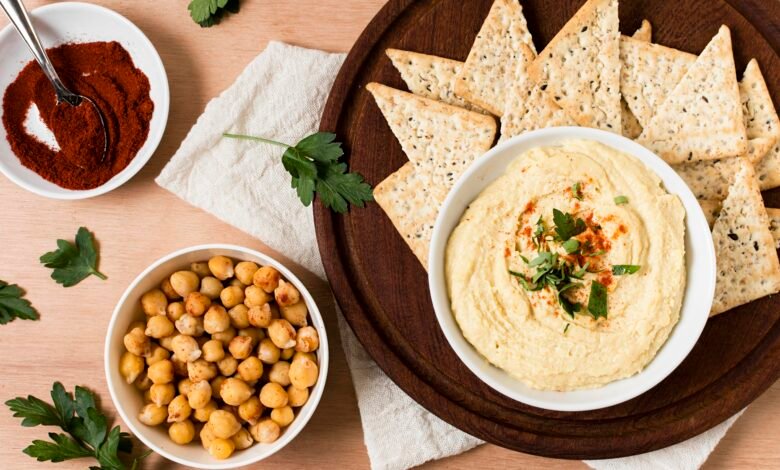Tahini: More Than Just a Hummus Ingredient – The Ultimate Guide

In the realm of pantry staples, few ingredients are as humble yet as transformative as tahini. This simple paste, made from ground sesame seeds, is the creamy, nutty heart of countless Middle Eastern dishes. For many, its journey begins and ends with a dollop in hummus, but to stop there is to miss out on a world of culinary possibility. From rich, savory sauces to decadent desserts and nutritious breakfast boosts, tahini is a versatile powerhouse waiting to be explored. This guide will delve into the essence of tahini, unlocking its secrets and showing you why this liquid gold deserves a permanent spot in your kitchen.
What Exactly is Tahini? The Soul of Sesame
Tahini is, at its core, a paste made from toasted and hulled sesame seeds. The process is remarkably similar to how peanut butter is made: the seeds are first cleaned, then soaked in water and salted to help loosen the bran, after which they are crushed and hulled. The now-naked seeds are then roasted, a critical step that develops their deep, nutty, and slightly bitter flavor profile. Finally, they are ground, first into a dry, crumbly paste and then into a smooth, liquid paste as the natural oils are released. The result is a rich, pourable substance with a consistency akin to a runny nut butter. It’s important to distinguish between two main types: hulled tahini, which is made from seeds with their outer shells removed, resulting in a lighter color, milder flavor, and smoother texture, and unhulled tahini, which retains the bran, offering a darker color, a more robust, slightly bitter taste, and a higher concentration of fiber and calcium.
A Nutritional Powerhouse in a Jar
Beyond its culinary appeal, tahini is a veritable superfood, packed with an impressive array of nutrients. It is an excellent source of healthy fats, primarily polyunsaturated and monounsaturated fats, which are known to support heart health by helping to reduce bad cholesterol levels. It is also a surprising plant-based source of protein, making it a valuable addition to vegetarian and vegan diets. Furthermore, tahini is rich in essential minerals. It boasts significant amounts of calcium for bone health, iron for energy and oxygen transport, magnesium for muscle and nerve function, and phosphorus. It also contains beneficial antioxidants, like sesamin and sesamol, which have anti-inflammatory properties. Because its nutrients are oil-soluble, your body can absorb them very efficiently, making every spoonful a potent boost to your overall well-being.
Beyond Hummus: The Culinary Versatility of Tahini
While its role in creating the perfect, creamy hummus is undeniable, confining tahini to the dip bowl is a culinary travesty. Its ability to add richness, creaminess, and a complex nutty flavor makes it incredibly versatile. In savory applications, it is the star of classic sauces like tarator (a lemon-garlic-tahini sauce) drizzled over falafel or grilled vegetables. Thinned with water and lemon juice, it makes a fantastic dairy-free dressing for salads or a sauce for grain bowls. In the realm of baking and desserts, tahini is a game-changer. It can be swirled into brownie batter, blended into smoothies for a protein kick, or form the base of halva, a famous fudge-like confection. It even works wonders in breakfast, stirred into oatmeal or yogurt, or simply spread on toast with a drizzle of honey or date syrup for a simple yet profoundly satisfying start to the day.
Selecting and Storing Your Tahini for Maximum Freshness
Not all tahini is created equal, and choosing the right one can make all the difference in your dishes. When shopping, look for a jar with minimal ingredient lists—ideally, it should contain nothing but sesame seeds. A good-quality tahini should have a smooth, pourable consistency and a pleasant, roasted aroma. Avoid any products that smell musty or rancid. The most renowned tahini often comes from Ethiopia or Sudan, where the sesame seeds are prized for their quality. Once you bring it home, storage is key. Due to its high oil content, tahini has a tendency to separate, with oil rising to the top. This is completely normal. Simply give it a thorough stir before use. To prolong its freshness and prevent rancidity, it is best stored in a cool, dark place, and many experts recommend storing it in the refrigerator after opening. The cold will cause it to thicken, but you can let it sit at room temperature for a while or scoop out what you need and warm it slightly to restore its fluidity.
FAQ (Frequently Asked Questions)
Q: What does tahini taste like?
A: Tahini has a unique flavor profile. It’s primarily nutty and earthy, reminiscent of sesame seeds, with a pleasant, subtle bitterness that keeps it from being cloying. The flavor can range from mild and creamy (in hulled varieties) to robust and intense (in unhulled ones).
Q: I have a nut allergy. Can I eat tahini?
A: Sesame is a seed, not a tree nut. However, sesame allergies are themselves one of the most common food allergies. If you have a known sesame allergy, you must avoid tahini. If you are only allergic to tree nuts, it is generally considered safe, but you should always consult with your doctor to be certain.
Q: My tahini is very bitter. Is it bad?
A: Not necessarily. A certain level of bitterness is natural and characteristic of tahini, especially unhulled varieties. However, an overpowering or unpleasant bitter taste can be a sign that the sesame seeds were over-roasted or that the tahini is past its prime and has become rancid. Trust your senses—if it smells or tastes off, it’s best to discard it.
Q: What can I use as a substitute for tahini in a recipe?
A: While the flavor is unique, in a pinch, you can use other nut or seed butters. For hummus, a combination of Greek yogurt and a little sesame oil can mimic the creaminess and flavor. For dressings or sauces, smooth, runny almond butter or cashew butter can work well, though the final taste will be different.
Conclusion
Tahini is far more than a supporting actor in the world of condiments; it is a versatile, nutritious, and deeply flavorful ingredient that can elevate everything from your morning toast to your most elaborate dinner. Its rich history is matched only by its potent health benefits and its astounding culinary flexibility. By looking past the hummus and embracing its potential in sauces, dressings, desserts, and more, you unlock a new dimension of cooking. So, the next time you see that jar on the shelf, see it not just as a hummus ingredient, but as a bottle of liquid gold, ready to bring its magic to your kitchen.



